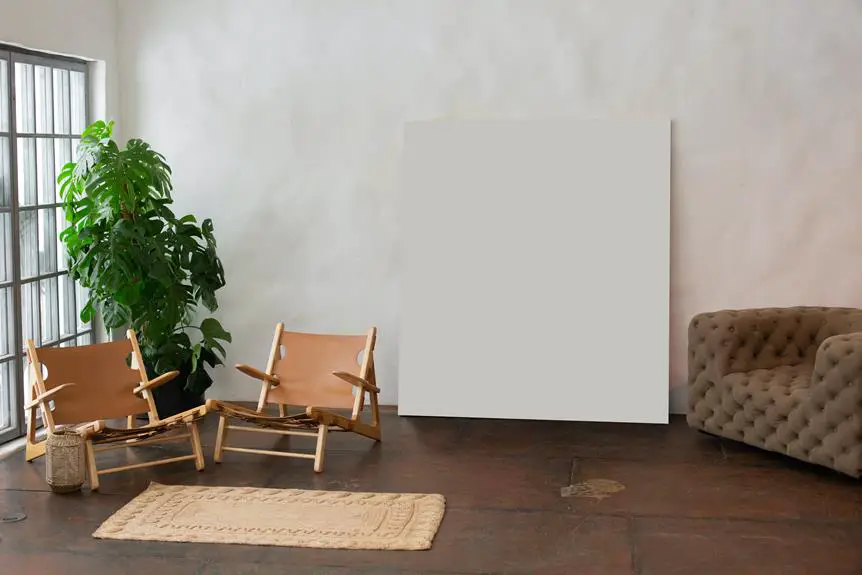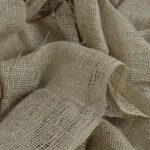If you want to make the most of your resources, 'waste not, want not' applies perfectly when it comes to reusing fabric pots. Learning how to clean and reuse them effectively can save you time and money while reducing your environmental impact.
In this guide, you'll discover five practical ways to give fabric pots a new lease on life. From proper cleaning techniques to creative repurposing ideas, you'll gain mastery over reusing fabric pots in a way that benefits both your wallet and the planet.
So, let's dive in and explore the best methods for preparing, cleaning, and reusing fabric pots to maximize their potential.
Key Takeaways
- Thoroughly clean fabric pots to remove debris and residue.
- Consider sterilizing methods like steam sterilization, bleach solution, or sunlight exposure.
- Repurpose fabric pots for indoor plants by choosing a suitable pot size and utilizing them as a versatile and eco-friendly option.
- Upcycle fabric pots for crafts by transforming them into unique planters, storage bins, decorative elements, or exploring other creative projects.
Preparing Fabric Pots for Reuse
You can prepare fabric pots for reuse by thoroughly cleaning them and ensuring they're free from any debris or residue.
The cleaning process is crucial to maintaining the pots' integrity and preventing the spread of diseases.
Start by emptying the soil from the pots and shaking off any loose dirt.
Then, use a soft brush or cloth to gently scrub the interior and exterior of the fabric pots.
For stubborn residue, a mixture of mild soap and water can be used to remove it effectively.
Make sure to rinse the pots thoroughly to eliminate any soap residue.
After cleaning, allow the fabric pots to air dry completely before storing them.
This simple yet thorough cleaning process will ensure that your fabric pots are ready for their next use.
Washing and Sterilizing Fabric Pots
To properly wash and sterilize fabric pots, begin by thoroughly rinsing them with water to remove any remaining soil or debris. Once rinsed, you can use different sterilizing methods and cleaning solutions to ensure the fabric pots are ready for reuse. Here are some effective methods and solutions to consider:
| Sterilizing Methods | Cleaning Solutions |
|---|---|
| Steam sterilization | Mild dish soap |
| Bleach solution | Hydrogen peroxide |
| Sunlight exposure | Vinegar solution |
Steam sterilization involves using a steamer to kill any remaining pathogens or microbes. When using a bleach solution, make sure to dilute it properly and soak the fabric pots for a few minutes before rinsing thoroughly. Sunlight exposure is a natural sterilizing method; simply place the fabric pots in direct sunlight for a few hours. For cleaning solutions, mild dish soap can be used with warm water, while a mixture of hydrogen peroxide or vinegar with water can effectively disinfect the fabric pots. Always ensure the fabric pots are completely dry before reusing them to prevent any potential issues with moisture.
Repurposing Fabric Pots for Indoor Plants
When repurposing fabric pots for indoor plants, select a suitable pot size based on the plant's growth and root system. Ensure the pot provides ample space for the roots to grow and expand, promoting healthy plant development.
Creative display is key when integrating fabric pots into your indoor plant decor. Consider arranging different fabric pot sizes and colors to create an aesthetically pleasing and sustainable gardening display.
Utilize fabric pots as a versatile and eco-friendly option for housing your indoor plants. These pots aren't only functional but also add a touch of uniqueness to your indoor gardening space.
Embrace sustainable gardening by repurposing fabric pots, reducing waste and contributing to a greener environment.
When choosing plants for your fabric pots, opt for species that thrive in containers and can adapt to indoor environments.
Upcycling Fabric Pots for Crafts
Consider incorporating fabric pots into your crafts as a sustainable and versatile material for various creative projects. Upcycling fabric pots for crafts not only sparks your creativity but also contributes to reducing waste and promoting eco-friendly alternatives.
Here are some innovative ways to repurpose fabric pots for your next craft project:
- Fabric Pot Planters: Transform fabric pots into unique planters by decorating them with paint, fabric scraps, or embroidery. These one-of-a-kind planters add a charming touch to your indoor or outdoor space while embracing sustainability.
- Fabric Pot Storage Bins: Utilize fabric pots to create stylish storage bins for organizing craft supplies, toys, or even clothing. By adding handles or labels, you can customize these bins to suit your organizational needs while reducing your environmental footprint.
- Fabric Pot Decor: Cut and stitch fabric pots into decorative elements such as wall hangings, fabric flowers, or even reusable gift wrap. This approach not only elevates your crafting skills but also showcases the versatility of fabric pots in artistic endeavors.
Explore the endless possibilities of upcycling fabric pots, and unleash your creativity while making a positive impact on the environment.
Storing Fabric Pots for Future Use
When storing fabric pots for future use, it's important to ensure they're clean and completely dry before packing them away. Proper storage is crucial for maintaining the longevity of fabric pots and ensuring they remain in good condition for subsequent use. Here are some storing tips to help you make the most of your fabric pots:
First, make sure the fabric pots are thoroughly cleaned and dried to prevent mold or mildew growth during storage. Once dry, fold the fabric pots neatly to save space and prevent creases that could weaken the fabric over time.
Store them in a cool, dry place away from direct sunlight to prevent fading or deterioration of the fabric material. Additionally, consider placing them in a breathable container, such as a cardboard box, to protect them from dust while still allowing air circulation.
Proper storage not only helps in maintaining the fabric pots in good condition but also ensures that you can reuse them for a long time, providing longevity benefits and reducing the need for frequent replacements.
Frequently Asked Questions
Can Fabric Pots Be Used for Outdoor Gardening as Well, or Are They Only Suitable for Indoor Plants?
You can definitely use fabric pots for outdoor gardening. They're a great alternative to traditional pots, allowing better aeration and root growth. The benefits of fabric pots include improved drainage and temperature regulation.
Are There Any Specific Types of Fabric Pots That Should Not Be Reused or Repurposed Due to Potential Contamination or Damage?
When reusing fabric pots, it's essential to consider potential contamination risks and reusability concerns. Some types of fabric pots, like those with mold or pest damage, should not be reused to avoid compromising the health of your plants.
How Can I Remove Tough Stains or Stubborn Residues From Fabric Pots During the Cleaning Process?
To remove tough stains from fabric pots, try natural cleaning methods like vinegar or baking soda. Prevent mold and mildew by thoroughly drying pots after cleaning. Repurpose fabric pots for outdoor gardening, but be mindful of potential contamination risks. Store them properly for long-term durability.
Are There Any Special Considerations or Precautions to Take When Repurposing Fabric Pots for Crafts, Such as Potential Hazards or Limitations?
When repurposing fabric pots for crafts, consider potential hazards like mold or mildew. Limitations may include the fabric's durability for certain projects. Take special considerations to ensure the pots are clean and safe to use.
What Is the Best Way to Store Fabric Pots to Ensure They Remain Clean and Ready for Future Use?
To keep fabric pots clean and ready for future use, store them in a cool, dry place. Proper storage can help maintain their shape and prevent mold. When reusing, consider repurposing for crafts or as containers for other plants.
- Tetron Fabric for Marine Applications: Durability and Use Cases - June 18, 2025
- Tetron Fabric for Outdoor Furniture: Weather Resistance and Care - June 18, 2025
- Tetron Fabric for Wall Coverings: Style and Application Tips - June 18, 2025







